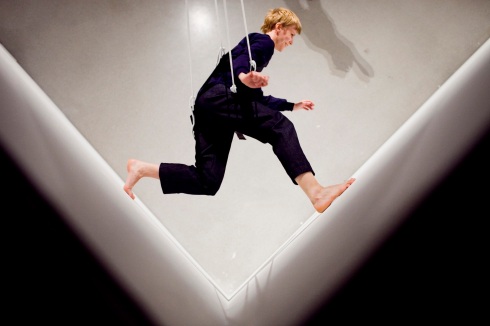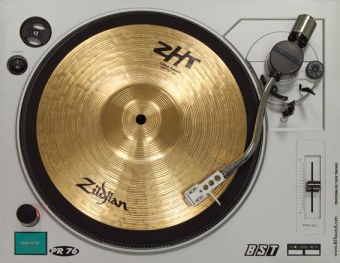Following on from the article The Gallery as a Dance Hall, it appears there is also a resurging interest in performative mark making. In Trisha Brown‘s Walking on the Walls a group of performers climb into suits harnessed to girders suspended from the gallery balcony, which act like the track of a rollercoaster. This enables them to walk horizontally along the gallery wall in a performance that at times becomes like a cat’s cradle as they approach each other and seem to pass on momentum. Essentially fixed on a straight line, the performers are generally only able to see and approach their neighbours, as described by Edwin A. Abbott in Flatland: A Romance of Many Dimensions, however they do occasionally cross each other’s path in a slightly awkward fashion akin to when a cat’s cradle gets tied up.
The performers leave slight marks and traces of their performance in the form of footprints on the white gallery walls. Whilst their impact is minimal, this could be read in a painterly fashion outside the performance. What remains is the essence of movement, like the ghostly remains of fossilised dinosaur footprints in the rock. As these footprints will clearly not last that long, being painted over for the next exhibition, if the wall hasn’t already been re-coated, it consequently draws allusion with the work of Richard Long. In his work A Line Made By Walking (1967) Long created a visible mark on the landscape through movement, but similarly the grass will have soon grown back.
Meanwhile, Brown’s Homemade (1966) resembles Stating the Real Sublime by Rosa Barba, mentioned in the article Still, through its use of movement of a film projector. Where Barba’s work is sculptural in creating movement of a projection by the rotation of the film in suspension, Brown wore a film projector like a backpack, projecting a film of her dancing on varying surfaces of the theatre as she repeats the filmed performance in person.









